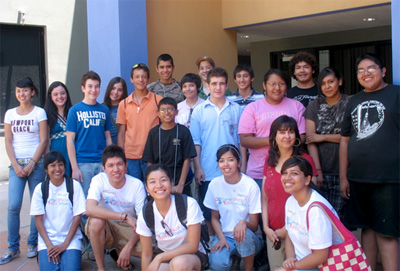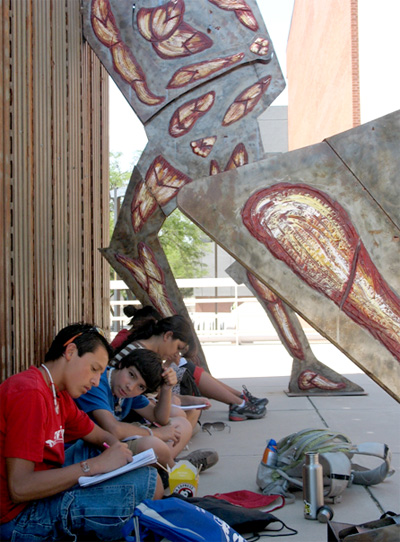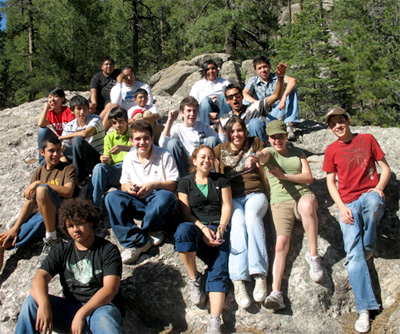
Environmental Factor, August 2008, National Institute of Environmental Health Sciences
Science Camp for Border Students
By Eddy Ball
August 2008



From the outset, almost everything about the very first University of Arizona (UA) summer camp for the environmental sciences held June 16 – 20 was designed to set it apart from the typical summer camp experience. Created by three Mexican scientists in the UA Superfund Basic Research Program (SBRP), CampCIENCIAS is an innovative program to fill a gap in the summer learning experiences available for high school students living along the U.S.-Mexico border — and make sure that young people had plenty of fun as they explored a variety of science disciplines and unique ecosystems in Arizona.
To be accepted, the twenty students who attended the weeklong overnight camp had to be sufficiently motivated to write an essay about themselves and their hometowns and list the reasons why they were interested in attending the camp. The camp was free and recruited campers from U.S. towns along the U.S.-Mexico border, including Rio Rico, Yuma, Nogales, Douglas, and the Sonoran Desert settlements of the Tohono O’odham Nation. Another unusual feature of CampCIENCIAS was its ratio of one staff member to every four campers, a degree of personal attention that few educational programs can offer their students.
CampCIENCIAS was the brainchild of three UA SBRP program coordinators — Monica Ramírez, Denise Moreno Ramírez and Rocio Estrella. Having grown up near, along or over the border in Mexico and worked in the SBRP Binational Center, the women understood the needs of the area and shared a commitment to improving science education opportunities for the children there.
When the trio pitched the idea and got the support of the UA SBRP director, Jay Gandolfi, Ph.D., they went to work securing funds for the camp from the UA Technology and Research Initiative Funds, known as TRIF, a state of Arizona tax that funds special investments in higher education.
The campers spent three nights in the Posada San Pedro Hall Dorm on the UA campus and one night at Biosphere 2 in Oracle, Ariz. The days began as early as 5:00 a.m. and included activities on campus and field experiences that kept students busy learning and having fun well into the night.
Campus activities included visits to the Flandrau Science Center, the UA Museum of Art, the UA Center for Creative Photography, the BIO5 Institute, the UA Laboratory of Tree-Ring Research and the National Optical Astronomy Observatory. Among the places the campers visited off campus were San Pedro Riparian National Conservation Area, Kartchner Caverns, Biosphere 2, Mt. Lemmon and nearby Summer Haven.
By week’s end, as graduation ceremonies brought together students, staff and parents, the camp’s organizers felt that CampCIENCIAS more than met their expectations. “It’s important to provide these types of opportunities to students in order to build their confidence and help recruit a future science work force that can confront environmental and health issues in their own communities,” Moreno Ramírez explained.
Estrella expressed her satisfaction that “this weeklong exploratory science expedition opened the possibilities in the minds of these young people,” and Ramírez praised “the power of learning experiences outside of the classroom [and] how they improve confidence and motivate science education.”
And the kids? Many spoke about learning, and nearly every one of them talked about how much fun they had. “This is the best camp I’ve ever been to,” wrote camper Neal Patel. “I knew this would be fun, but it turned out to be a lot more fun than I ever thought it would be.”
"2008 Green Technology..." - previous story ![]()
![]() next story - "PCBs Are Topic..."
next story - "PCBs Are Topic..."
August 2008 Cover Page



